#Carthaginian
Text

Hannibal Crossing the Alps by Francisco Goya
#hannibal barca#hannibal#alps#italy#art#francisco goya#antiquity#carthaginian#carthaginians#carthage#punic wars#second punic war#rome#ancient rome#ancient carthage#roman#romans#history#europe#european#mediterranean#cisalpine gaul#roman republic
94 notes
·
View notes
Text
It isn’t as famous as that of the Greeks and Romans, but the Carthage religion is just as fascinating. Its pantheon of gods evolved and grew with the Carthage Empire.
26 notes
·
View notes
Text
Phoenician and Hebrew were both dialects of the Canaanite language and so they were mutually intelligible. Even Punic, the language of Carthage, which was a Phoenician colony, at its height in the 3rd century BCE would still be similar enough to Hebrew to allow for communication. This means that Hannibal Barca, the Carthaginian general that crossed the Alps with his elephants and attacked Rome could, if given an opportunity, read the Hebrew Bible in the original, although with some difficulty.
26 notes
·
View notes
Text
There Were Elephants Here Before

While crossing the Alps in 218 BC, the great Carthaginian general Hannibal Barca has stumbled upon the skull of a woolly mammoth half-buried in the snow. Given the difficulty his own animals have experienced in enduring the montane cold, he wonders how elephants could ever be native to these frigid heights deep in Europe.
This is of course a speculative scenario, but woolly mammoth remains have actually been found in the Alps on several occasions, so I think it’s theoretically possible for Hannibal or people in his army to have found some on their trek.
#hannibal barca#hannibal#ancient carthage#carthaginian#north african#african#ancient#black man#dark skin#elephant#african elephant#woolly mammoth#mammoth#fossil#alps#history#digital art#art
16 notes
·
View notes
Photo
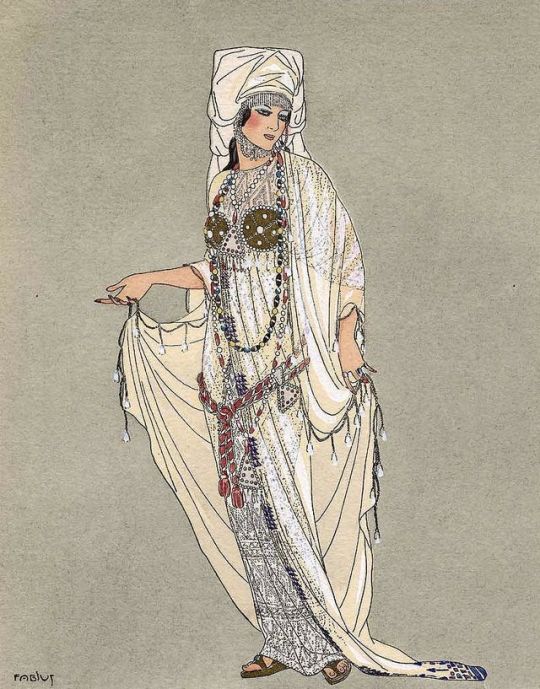
Alberto Fabio Lorenzi, Sophonisbe (Sophonisba). Projet de costume de Worth pour Madame Bartet (Costume design for Madame Bartet in the role of Sophonisba by House of Worth), La Gazette du Bon Ton, 1913.
This project of House of Worth was executed for Mrs. Bartet in the role of Sophonisba. It consists of a large shirt in oriental tulle with a lamé of silver, half covered with an embroidered Indian veil, and a cream coat in an Indian transparent veil. The cabochons are of gold and fine pearls and the belt is a double necklace of orient.
Sophonisba (fl. 203 BC) was a Carthaginian noblewoman who lived during the Second Punic War, and the daughter of Hasdrubal Gisco Gisgonis (son of Gisco). In an act that became legendary, Sophonisba poisoned herself rather than be humiliated in a Roman triumph. (x)
#alberto fabio lorenzi#1913#house of worth#sophonisba#sophonisbe#sophoniba#costume#costume illustration#1910s costumes#1910s costume illustration#noblewoman#carthaginian#second punic war#poisoned#Madame Bartet#Anne Régina Badet#Mme Bartet#la belle epoque#belle epoque#Carthaginian costume#ancient carthage#carthage#Carthagian#carthaginian empire#charles frederick worth#lorenzi#fabius lorenzi
28 notes
·
View notes
Text
ANATOLIA & LEVANT RESOURCES
The Anthropological Masterlist is HERE.
Anatolia, or Asia Minor, is a historical West Asian peninsula that constitutes the major part of modern-day Turkey.
HITTITE ─ “The Hittites, or the Empire of Hattusa, were an Anatolian people that lived during the Bronze Age, from 1650 B.C.E. to 1190 B.C.E. At their height, the empire encompassed the majority of modern-day Turkey, Lebanon, and Syria.”
─ Hittite Cuneiform Script
─ Hittite Grammar
─ The Chicago Hittite Dictionary Project
HURRIAN ─ “The Hurrians, or Khurrites, were a Near East people that lived from 3000 B.C.E. to 1300 B.C.E. They lived in Anatolia and Mesopotamia.”
─ The Mitanni Empire
─ Hurrian Culture
─ Hurrian Mythology
LUWIAN ─ “The Luwians are a group of Anatolian people that lived from the Bronze Age to the Iron Age. They lived in modern-day Turkey.”
─ Luwian Studies
─ Luwian Dictionary
PHRYGIA ─ “The Phrygian people were an Anatolian people that lived from 1200 B.C.E. to 700 B.C.E. They lived in central Anatolia.”
─ Phrygian Language
─ Phrygian Inscriptions
THRACIA ─ “The Thracians were an Indo-European people that lived from the 8th century B.C.E. to 1st century C.E. They lived in the Balkans and Anatolia.”
─ Thracian Information
─ Thracian Culture
─ Thracian Language
UGARIT ─ “Ugarit was an Anatolian civilization that lived from 6000 B.C.E. to 1185 B.C.E. They lived in modern-day northern Syria.”
─ Ugaritic Information
─ Ugarit in the Bible
─ El in Ugaritic Texts
The Levant is a historical West Asian region in the Eastern Mediterranean region of Asia. It spans from the western part of the Arabian Peninsula to northeast Africa.
CARTHAGE ─ “Ancient Carthage, or the Carthaginian Empire, was a Mediterranean civilization that lived from 814 B.C.E. to 146 B.C.E. They lived in modern-day Tunisia.”
─ Carthage Information
─ Carthaginian Religion
─ Carthaginian Archaeology
EGYPT ─ “The Ancient Egyptians were a northeastern African people. They lived in the Nile Valley in Egypt.”
─ Egyptian Information
─ Ancient Egyptian Art
─ Women in Ancient Egypt
PHOENICIA ─ “The Phoenician people were a Mediterranean people that lived from 2500 B.C.E. to 64 B.C.E. They lived in modern-day Lebanon.”
─ Phoenician History
─ Phoenician Alphabet
─ Phoenician and Punic Languages
SYRIA ─ “The Syrians are an Eastern Mediterranean people that share the Syrian culture. They are native to Syria.”
─ Syria Information
─ Syria from 1700 C.E to 1920 C.E.
─ Syrian Cultural Zones
#resources#anatolia#levant#hittite#hurrian#luwian#phrygian#thracian#ugaritic#carthaginian#ancient egyptian#phoenician#syria
56 notes
·
View notes
Text

Dido Dido Dido
#The guy in the back in Hannibal 💕#I can’t tag him bc of yknow#Drawing things from the Aeneid is revision actually#I’m obsessed with Dido cursing all the Carthaginians#It’s so so good#dido#dido of carthage#the aeneid#the Aeneid art#Fanart#mythology art#my art#roman mythology#Also I do not know what Hannibal looks like and I didn’t look it up#Take him with a grain of salt#Vergil#Dido
712 notes
·
View notes
Text

The book. 2022 acrylic on canvas michael pontieri 55x34cm
#lucia#acrylic on canvas#nocturne#two moons#reading#il libro#the book#carthaginian ship#adirondack chair#stars
938 notes
·
View notes
Text
About Tanit
I recently posted about how people should be looking more into other gods outside of the Greco-Roman pantheons. If you follow me for quite some times, you will also have noted I posted a bunch of loose translation from the French Dictionary of literary myths (which is truly a great reference). Well, I wanted to share with you today a loose translation – well, more of an info-mining at this point – of an article about a goddess that people often ignore the existence of, despite being located right next to Ancient Greece and Rome, and being involved in the history of the Roman Empire. And this goddess is Tanit.
Written by Ildiko Lorinszky, the article is organized in two – at first it takes a look and analysis at the mythological Tanit, at who and what she likely was, how her cult was organized all that. The second part, since it is a Dictionary of LITERARY myths, takes a look at the most prominent and famous depiction of Tanit in French literature – that is to say Flaubert’s famous Salammbô. (If you recalled, a long time ago I posted about how a journalist theorized in an article how Flaubert’s Salammbô was basically an “epic fantasy” novel a la Moorcock or Tolkien long before “fantasy” was even a genre)
Part 1: Tanit in mythology and archeology
Tanit was the patron-goddess of the city of Carthage. Considered to be one of the avatars o the Phoenician goddess Astarte, Tanit’s title, as found on several Punic engravings, was “The Face of Baal” – a qualification very close to how Astarte was called in Sidon and Ugarit “The Name of Baal”. These titles seem to indicate that these two goddesses acted as mediators or intermediaries between humanity and Baal.
Tanit is as such associated with Baal, the vegetation god, but sometimes she is his wife, other times she is simply his paredra (companion/female counterpart). She seems to be the female power accompanying the personification of masculinity that is Baal, and as such their relationship can evoke the one between Isis and Osiris: the youthful sap of the lunar goddess regularly regenerates the power of the god. This “nursing” or “nourishing” function of Tanit seems to have been highlighted by the title she received during the Roman era: the Ops, or the Nutrix, the “Nurse of Saturn”. Goddess of the strengthened earth, Tanit is deeply tied to agrarian rituals: her hierogamy with Baal reproduces in heaven the birth of seeds on earth. Within the sanctuaries of Tanit, men and women devoted to the goddess practiced a sacred prostitution in order to favorize the fecundity of nature. The women tied to the temple were called “nubile girls”, while the men working there were called “dogs” to highlight how completely enslaved they were to the goddess. We know that the prostitutes of both sexes brought important incomes to the temple/
The etymology of Tanit (whose name can also be called Tannit or Tinnit) is obscure. The most probable hypothesis is that the Phoenico-Punic theonym “Tnt” is tied to the verb “tny”, which was used in the Bible to mean “lamenting”, “wailing”, “crying”. According to this interpretation, the “tannît” is originally a “crier”, a “wailer”, and the full name of Tanit means “She who cries before Baal”. As such, the Carthaginian goddess might come from a same tradition as the “Venus lugens”.
According to some mythographers, Tanit (or Astarte) was the supreme goddess of Carthage, and might have been identical to the figures of Dido and Elissa. As in, Dido was in truth the celestial goddess, considered as the founder of the city and its first queen. According to this hypothesis, the suicide of Dido on a pyre was a pure invention of Virgil, who took this motif from various celebrations hosted at Carthage. During these feasts-days, images and depictions of the goddess were burned The word Anna would simply mean “clement”, “mild”, “merciful” – the famous Anna, sister of Dido, is thought to have been another Punic goddess, whose cult was brought from Carthage to Rome, and who there was confused with the roman Anna Perenna, a goddess similar to Venus. Varro claimed that it was not Dido that burned on the pyre, but Anna, and according to this angle, Anna appears as a double of Dido – and like her, she would be another manifestation of the goddess Tanit. Anna’s very name reminds of the name “Nanaia”/”Aine”, which was a title given to Mylitta, yet another manifestation of Tanit.
The sign known as the “sign” or “symbol of Tanit” seems to be a simplified depiction of the goddess with her arms open: it is a triangle (reduced to a trapezoid as the top of the triangle is cut) with an horizontal line at its top, an a disc above the horizontal line. This symbol appears throughout the Punic world on monuments, steles, ceramics and clay figurines.
Part 2: The literary Tanit of Flaubert
Gustave Flaubert’s novel Salammbô is probably where the goddess reappears with the most splendor in literature. While her essence is shown being omnipresent throughout the Punic world, Tanit, as the soul of the city, truly dwells within the town’s sanctuary, which keeps her sacred cloak. The veil of the goddess, desired by many, stolen then regained throughout the plot, plays a key role within the structure of this very enigmatic text, which presents itself as a “veiled narrative”.
The town and its lands are filled with the soul of the “Carthaginian Venus”. The countryside, for example, is filled with an erotic subtext, sometimes seducing, sometimes frightening – reflecting the ambiguity of the goddess. The landscape is all curves, softness, roundness, evoking the shapes of a female body – and the architecture of both the city-buildings and countryside-buildings are described in carnal ways. Within Salammbô, Flaubert describes a world where the spirit and the flesh are intertwined – the female world of Carthage is oppressed by an aura mixing lust with mysticism; and through the erotic nature creeps both a frightening sacred and an attractive morbidity. For death and destruction is coming upon Carthage.
The contradictory nature of the goddess appears as early as the very first scene of the novel, when the gardens of Hamilcar are described. The novel opens on a life-filled landscape: the gardens of the palace are a true Land of Eden, with an abundant vegetation filled with fertility symbols. The plants that are listed are not mere exotic ornaments: they all bear symbolic and mythological connotations. The fig-tree, symbol of abundance and fecundity ; the sycamore, “living body of Hathor”, the tree of the Egyptian moon-goddess ; the grenade, symbol of fertility due to its multiple seeds ; the pine tree, linked to Attis the lover of Cybele ; the cypress, Artemis’ tree ; the lily, which whose perfume was said to be an aphrodisiac ; the vine-grapes and the rose… All those plants are linked to the moon, that the Carthaginian religion associated with Tanit. Most of these symbols, however, have a macabre touch reflecting the dark side of the goddess. The cypress, the “tree of life”, is also a funeral tree linked to the underworld ; the coral is said to be the same red as blood, and was supposedly born from the blood-drops of Medusa ; the lily symbolizes temptation and the unavoidable attraction of the world of the dead ; the fig-tree just like the grenade have a negative side tied to sterility… The flora of this passage, mixing benevolent and malevolent attributes, already depict a world of coexisting and yet opposed principles: fertility cannot exist without sterility, and death is always followed by a renewal. The garden’s description introduces in the text the very cycles of nature, while also bringing up the first signs of the ambivalence that dominates the story.
The same union of opposites is found within the mysterious persona of Tanit. The prayer of Salammbô (which was designed to evoke Lucius’ lamentations to Isis within Apuleius’ Metamorphosis) first describes a benevolent goddess of the moon, who fecundates the world : “How you turn, slowly, supported by the impalpable ether! It polishes itself around you, and it is the movement of your agitation that distributes the winds and the fecund dews. It is as you grow and decrease that the eyes of the cats and the spots of the panthers lengthen or shrink. The wives scream your name in the pains of labor! You inflate the sea-shells! You make the wines boil! […] And all seeds, o goddess, ferment within the dark depths of your humidity.” As a goddess presiding to the process of fermentation, Tanit is also tied to the principle of death – because it is her that makes corpses rot.
The Carthaginian Venus appears sometimes as an hermaphrodite divinity, but with a prevalence and dominance of her feminine aspect. Other times, she appears as just one of two distinct divinity, the female manifestation in couple with a male principle. Tanit synthetizes within her the main aspects of all the great moon-goddesses: Hathor, Ishtar, Isis, Astarte, Anaitis... All are supposed to have an omnipotence when it comes to the vegetal life. Mistress of the elements, Tanit can be linked to the Mother-Earth : for the character of Salammbô, the cloak of the goddess will appear as the veil of nature. The daughter of Hamilcar is linked in a quite mysterious way to Tanit – for she is both a frightened follower of the goddess, and the deity’s incarnation. Described as “pale” and “light” as the moon, she is said to be influenced by the celestial body: in the third chapter, it is explained that Salammbô weakened every time the moon waned, and that while she was languishing during the day, she strengthened herself by nightfall – with an additional mention that she almost died during an eclipse. Flaubert ties together his heroine’s traits with the very name “Salammbô”, which is a reminiscence of the funeral love of Astarte: “Astarte cries for Adonis, an immense grief weighs upon her. She searches. Salmmbô has a vague and mournful love”. According to Michelet’s explanations, “Salambo”, the “love name” of Astarte, is meant to evoke a “mad, dismal and furious flute, which was played during burials”.
As a character embodying Tanit, Salammbô is associated with the two animals that were sacred to the goddess: the holy fishes, and the python snake, also called “the house-spirit”. Upon the “day of the vengeance”, when Mâtho, the scape-goat, is charged with all the crimes of the mercenaries, she appears under the identity of Dercéto, the “fish-woman”. The very detailed costumes of Salammbô contain motifs borrowed to other goddesses that are avatars of Tanit. By using other goddesses, Flaubert widens the range of shapes the lunar goddess can appear with, while also bringing several mythical tales, whose scattered fragments infiltrate themselves within the novel. When she welcomes her father, Salammbô wears around her neck “two small quadrangular plates of gold depicting a woman between two lions ; and her costume reproduced fully the outfit of the goddess”. The goddess depicted here is Cybele, the passionate lover of Attis, the young Phrygian shepherd. This love story that ends in mutilations bears several analogies with the fatal love between Salammbô and the Lybian leader. And the motif of the mutilation is one of the key-images of the novel.
A fish-woman, like Dercéto, Salmmbô is also a dove-woman, reminding of Semiramis ; but more so, she is a snake-woman, linked mysteriously to the python. Before uniting herself with Mâtho (who is identified to Moloch), Salammbô unites herself with the snake that incarnates the lunar goddess in her hermaphroditic shape. It is the python that initiates Salammbô to the mysteries, revealing to Hamilcar’s daughter the unbreakable bond between eroticism and holiness. In the first drafts of the novel, Salammbô was a priestess of Tanit, but in the final story, Flaubert chose to have her father denying her access to the priesthood. So, she rather becomes a priestess under Mathô’s tent: using the zaïmph, she practices a sacred prostitution. The union of Hamilcar’s daughter and of the leader of the mercenaries reproduces the hierogamy of Tanit and Moloch.
Salammbô, confused with Tanit, is also victim of the jealous Rabbet. Obsessed with discovering the face of the goddess hidden under the veil, she joins the ranks of all those female characters who curiosity leads to the transgression of a divine rule (Eve, Pandora, Psyche, Semele). And, in a way, the story of Mathô and Salammbô reproduces this same story: the desire to see, the desire for knowledge, always leads to an ineluctable death.
#tanit#astarte#punic goddess#carthaginian goddess#carthage#baal#flaubert#salammbô#salammbo#french literature#punic mythology#carthaginian mythology
49 notes
·
View notes
Text
The Great Mother
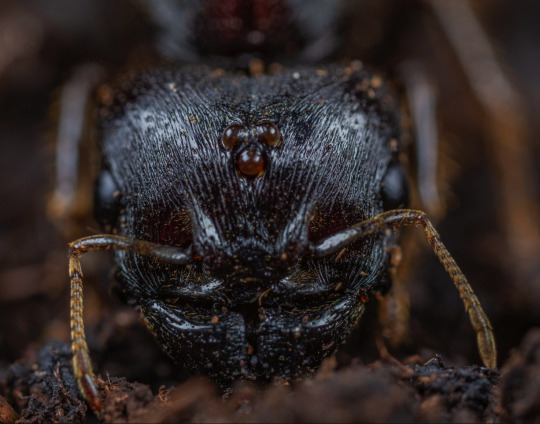
"... Mother was always this larger than life figure in our lives, it was hard to imagine that someone so powerful, so constant, could need our help..."
This is a Carebara diversa queen looking at one of her minor workers. Once their nest is established the queen relies on them to feed her and keep her safe. When the colony reaches a large enough size majors with similar proportions to the queen will be born.
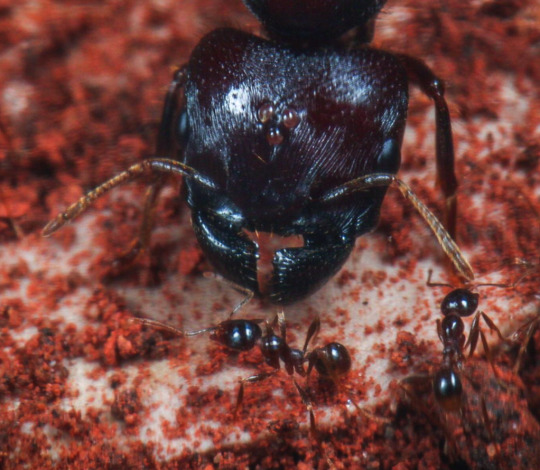
It's interesting to me that the queen has such stubby antennae. (the majors do too) It makes me wonder if ant communication is better when the antennae are of a similar scale.
Short antennae can also be an adaptation to make fighting less risky. But a queen like this would avoid fighting. (majors are another story. They are called "marauder ants" because the minors ride on the majors backs, like a troop of Carthaginian soldiers on the back of an elephant. )
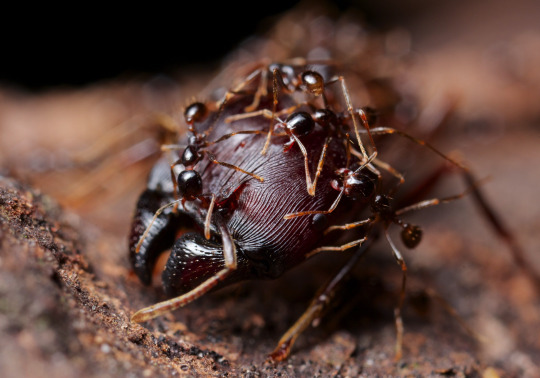
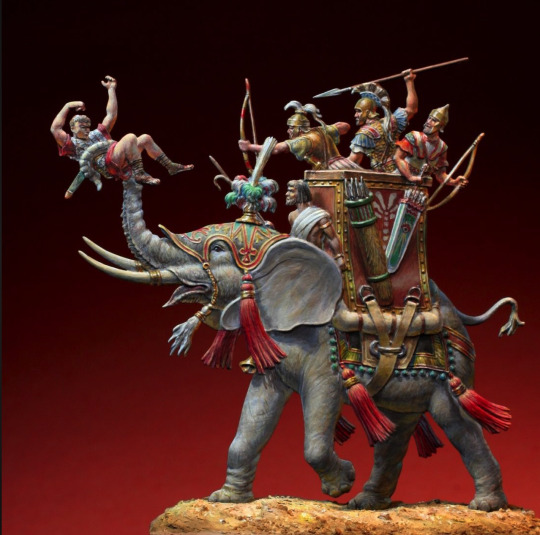
(Photo source)
#ants#antposting#bugblr#ant#myrmecology#antblr#antkeeping#invertebrates#insects#bugs#Carthaginian soldiers#Carebara diversa#war elephant
37 notes
·
View notes
Text
May I steal you 5 minutes?

#hehehee funny I live in Cartagena (The carthaginians guys exactly)#do you guys like my excuse to make him spaniard?#I could also go on how Lune sounds like Luna but Lune is an already existing word#(I’m devastated/j)
35 notes
·
View notes
Text

Hannibal recognises the head of his brother Hasdrubal
by Giovanni Battista Tiepolo
#hannibal barca#hasdrubal barca#art#giovanni battista tiepolo#carthaginians#romans#carthaginian#roman#ancient rome#rome#italy#carthage#history#antiquity#second punic war#punic wars#italia#europe#meditteranean#hannibal#hasdrubal
365 notes
·
View notes
Text
Carthage rose from humble beginnings to become one of Rome’s greatest rivals. Sadly, today it is mainly remembered in the context of its dramatic fall and ultimate defeat.
24 notes
·
View notes
Note
In regards to your woes of everyone being named Marcellius. I just read "The Carthaginians" by Dexter Hoyos, and if you thought the Romans were bad for reusing names, then hoo boy the Carthaginians were even worse. All Carthaginian aristocrats had one of these names, Hannibal, Hasdrubal, Himilco, Gisco, Bomilcar, Hanno, Bostar, Adherbal, Mago, and Maharbal. And if they didn't have last names, and if they had cognomen, they were rarely recorded. There are only two noble Carthaginian families that can definitely be identified, and thats the Magonids, and the Barcids, And with the Magonids, that wasn't even their cognomen. We just know that the descendants of a certain Mago held power for a century and a half, so all the major Carthaginians we hear about in this area are Probably Magonids, unless stated otherwise.
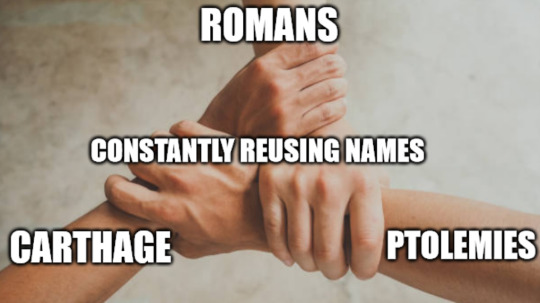
I'm never teasing my mom for naming dogs after food items and onomatopoeia again.
#the great onomastics clusterfuck#jedistemple#just roman asks#just roman memes#carthage#names#dexter hoyos#the carthaginians
49 notes
·
View notes
Text
Carthaginian Woman with Raised Arms

What began as simple practice drawing a woman with raised arms became this random dudette from ancient Carthage. Her hairstyle, which I believe is called “twists”, is based on that of a Carthaginian bust on display at the British Museum in London, UK.
#ancient carthage#ancient#carthaginian#north african#african#black woman#woman of color#dark skin#afro twists#digital art#art
2 notes
·
View notes
Text

Five Rare 2,300-Year-Old Gold Coins Discovered in Ancient Carthage
Researchers made the discovery during excavation works in the North African nation of Tunisia, in an area that once formed part of the territory of ancient Carthage, the country's Ministry of Cultural Affairs has announced in a statement.
Carthage was a great city of antiquity founded by the Phoenicians on the north coast of Tunisia in the first millennium B.C. The city became a thriving port and trading center, eventually developing into a significant power in the Mediterranean. Carthage became a major rival to Rome, which eventually conquered and destroyed the city in 146 B.C.
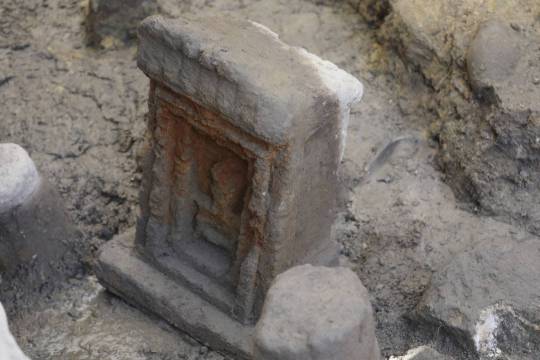

The archaeological site of ancient Carthage-added to UNESCO's World Heritage List in 1979-lies in what is now a residential suburb of modern Tunisia's capital Tunis.
Carthage had a sacred site known as a "tophet," which served as a burial ground, particularly for young children.
Thousands of urns containing the ashes of young children have previously been found at the site, which was originally dedicated to the deities Baal Hammon and Tanit.
It is here that archaeologists found the five gold coins dating back to the 3rd century B.C. in August, as well as several urns with the remains of animals, infants and premature babies.
The gold coins reflect "the richness of that historical period and [affirm] the value of the civilization of Carthage," the ministry said in a statement.

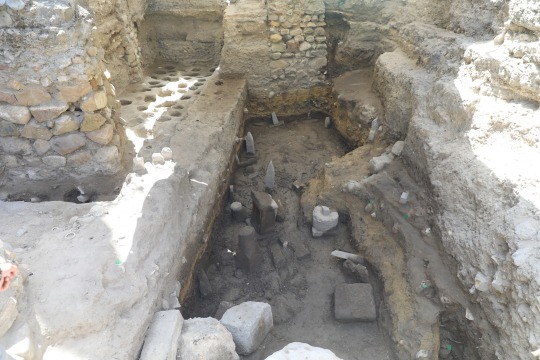
The rare gold coins measure around an inch across and have designs showing the face of Tanit-a symbol of motherhood, fertility and growth for the Carthaginians.
Archaeologists believe that the coins were left as offerings to Baal Hammon and Tanit by wealthy worshippers.
Tophets have been found at other Carthaginian sites, which were traditionally thought to house the victims of child sacrifice. Ancient Roman, Hellenistic and biblical sources attest to this, and some modern scholars agree.
However, the topic is controversial, with other experts arguing that tophets were simply children's cemeteries for individuals who died naturally, or that not all the burials were sacrifices.

The latest finds are not the only recent discovery of ancient coins. Earlier in August, a metal detectorist found two gold coins from different historical eras on the same day in a field in England.
In July, archaeologists uncovered several 500-year-old gold coins during excavations at the ruins of a medieval monastery in Germany.
Also in July, the Israel Antiquities Authority announced that a rare silver coin dated to the time of the First Jewish Revolt against the Roman Empire, between A.D. 66 and 70, had been discovered in the Judean Desert.


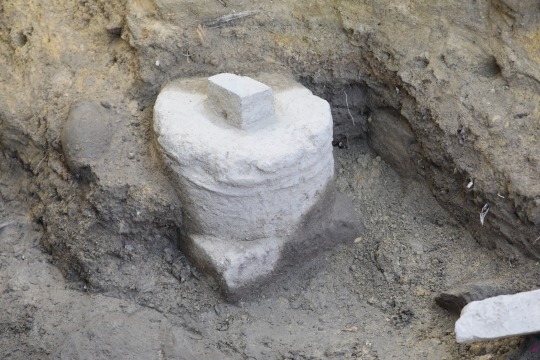

#Carthage#Five Rare 2300-Year-Old Gold Coins Discovered at Ancient Carthage#The Tophet of Carthage#ancient grave#ancient tomb#ancient temple#gold#gold coins#collectable coins#treasure#ancient artifacts#archeology#archeolgst#history#history news#ancient history#ancient culture#ancient civilizations#Carthaginian Empire
38 notes
·
View notes